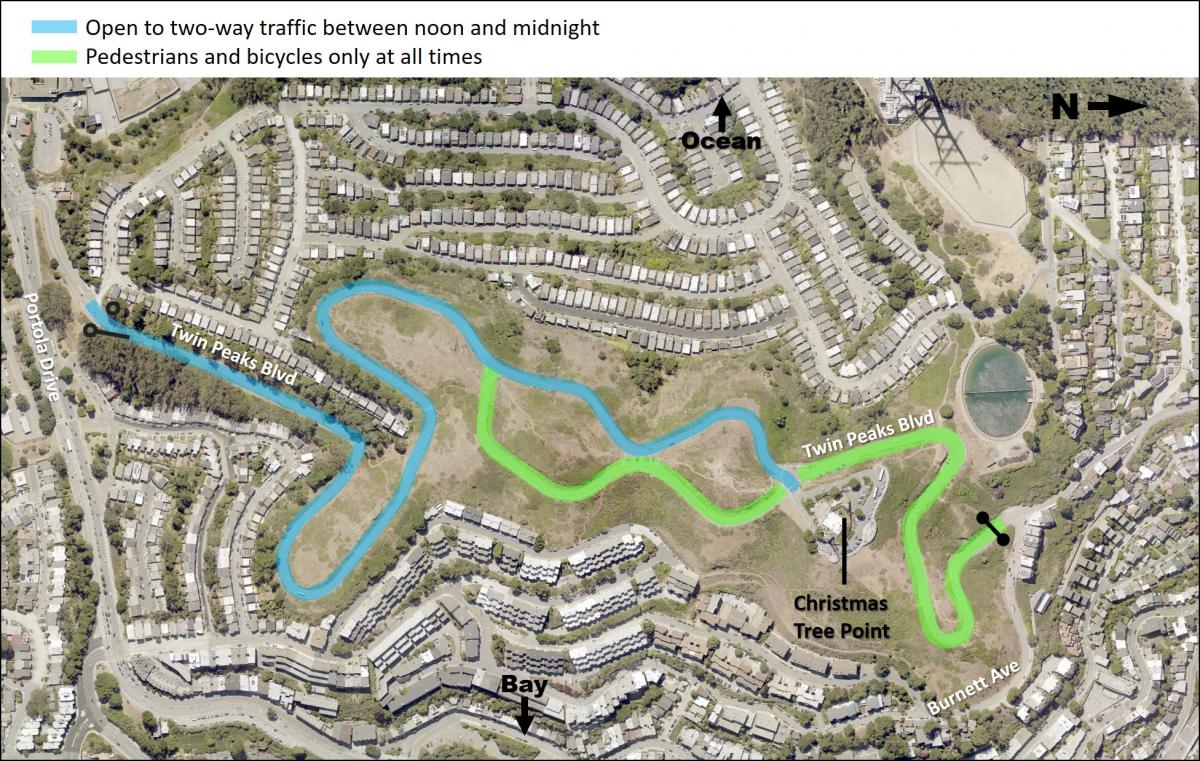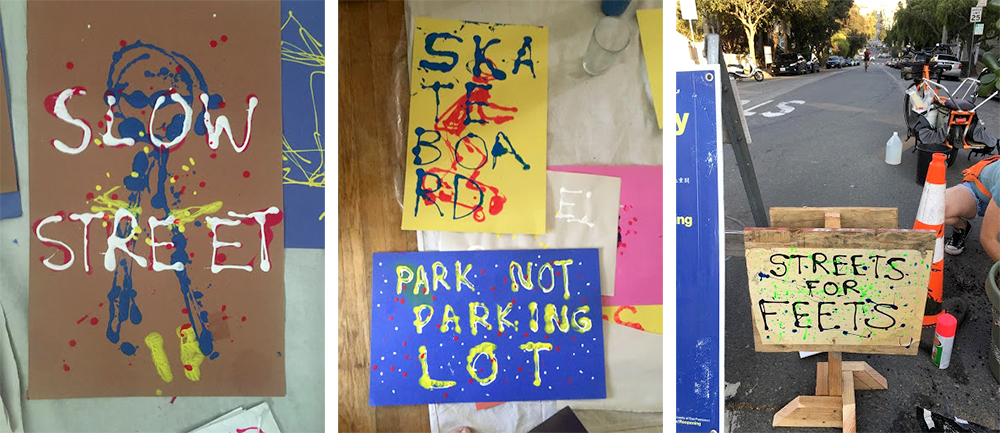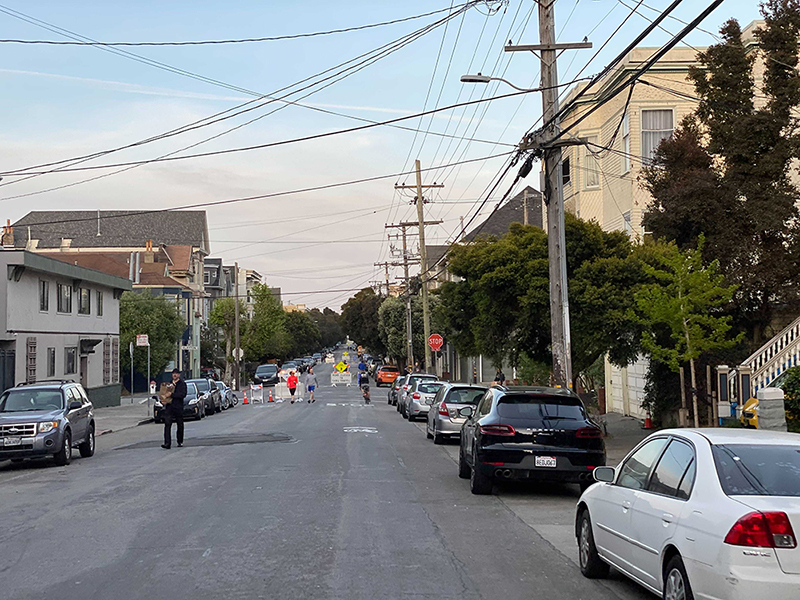UPDATE: Thank you for your interest in working for the San Francisco Bicycle Coalition. This hiring process is closed and we are no longer accepting applications for the community organizer position. If you have questions, please contact info@sfbike.org.
The San Francisco Bicycle Coalition is transforming our streets and neighborhoods into safe, just, and livable places by promoting the bicycle for everyday transportation. We’re seeking a passionate, highly motivated Deputy Director to lead our organizational development and culture.
The Deputy Director, Organizational Development will help the SF Bicycle Coalition to achieve its mission and the goals set forth in its strategic plan by providing leadership in the areas of organizational development including strategic operations planning, systems development, and organizational culture, while also providing supervision to multiple additional organizational departments. This position supervises other Director-level and operational staff. The Deputy Director has leadership responsibility for finance, human resources, office and facilities management, contract management, and risk management.
The San Francisco Bicycle Coalition is an equal opportunity employer and acknowledges the role biking culture and transportation has played in disproportionate access and resources to underserved communities — including people of color, people from working class backgrounds, women, and LGBTQ+ people. We believe that these communities must be centered as leaders in the work we do. Hence, we strongly encourage applications from people with these identities.
APPLY HERE
Primary responsibilities include:
Organizational Leadership
- Lead the development of organization-wide planning and systems;
- Develop the organization, its values and culture, and its commitment to anti-racism, in partnership with the Executive Director; and
- Support the Executive Director’s role in board development, including preparing the board of directors for monthly meetings and reporting on the organization’s progress toward achieving strategic plan goals and objectives.
Planning and Policy Development
- Help lead the creation and implementation of the organization’s next strategic plan in 2022.
- Design and implement planning processes that support strategic and operations planning and organization development, including annual project planning and emergency planning;
- Develop and implement SF Bicycle Coalition’s ongoing anti-racism goals, policies, and initiatives in partnership with the Board and staff;
Human Resources (HR) and Risk Management
- Manage the HR function and HR policy development. Ensure compliance with regulatory requirements and written policy;
- Oversee risk management, contract management and documentation
- Ensure compliance with all state and federal laws regarding lobbying, including updating systems to track compliance and training;
Finance
- Develop fiscal strategies and budgets within agreed-upon parameters in consultation with the Executive Director;
- Oversee financial management and the development of financial policies and procedures. This includes the analysis of financial statements and reports;
Office Management & Information Technology (IT)
- Oversee office management and IT systems to support smooth functioning of SF Bicycle Coalition systems and space;
Strong candidates will possess as many of the following qualifications as possible:
We recognize that this position encompasses a number of different responsibility areas. We are committed to train and support our staff to strengthen their abilities in each area and we encourage applications from people who may not have all of the qualifications listed below.
- A deep commitment to the SF Bicycle Coalition’s mission;
- Interest in and passion for transportation equity, justice, and antiracism;
- Substantial executive or senior management experience in the areas of human resources, finance and/or information technology management, including people management experience;
- Demonstrated ability to articulate and implement compelling strategies for organization development that take account of organizational culture and collaboration;
- Proven track record of success in organization-wide planning and system development;
- Demonstrated ability to be analytical, persuasive, and work in partnership with a dynamic leadership and staff;
- Experience developing evaluation systems, including creation of dashboards;
- High level of organization and time management skills;
- Excellent written and verbal communication skills;
- Experience working within diverse teams and communities.
- Experience developing and managing budgets in excess of $2 million;
- A strong track record of managing complex projects, including holding teams accountable for delivering desired outcomes;
- Ability to analyze and plan for organizational technology needs, including budgeting and resources allocation;
- Familiarity with Salesforce or comparable cloud-based CRM; and
- Familiarity with Google Apps suite.
Reports to: Executive Director
Direct Reports: Program Director, Membership Director, Operations Director, Technology Strategist, Development Manager
Salary and Benefits: The annual salary for this exempt position is between $95,000 and $105,000, depending upon depth of experience. Full-time benefits include excellent medical, vision and dental insurance with no employee contribution, as well as three weeks of Paid Time Off, two weeks of sick leave, a telecommuting stipend and a flexible work arrangement policy.
Hours: Full-time. Flexibility to work nights and weekends; this position may require working approximately two weekday evenings and one weekend day monthly.
About the San Francisco Bicycle Coalition
The San Francisco Bicycle Coalition works to transform San Francisco’s streets and neighborhoods into safe, just and livable places by promoting the bicycle for everyday transportation. Our work is guided by our five-year strategic plan and the core values of Transportation Justice, Sustainability, People Power and Joy. The organization’s culture reflects its grassroots origins and professional advocacy in equal measures. Our active membership of over 10,000 represents San Franciscans of all ages and backgrounds from all neighborhoods who are working towards safe, sustainable and more affordable ways to move around our city. The SF Bicycle Coalition is the largest city-based bicycle advocacy group in the nation and one of the largest member-driven groups in San Francisco.




